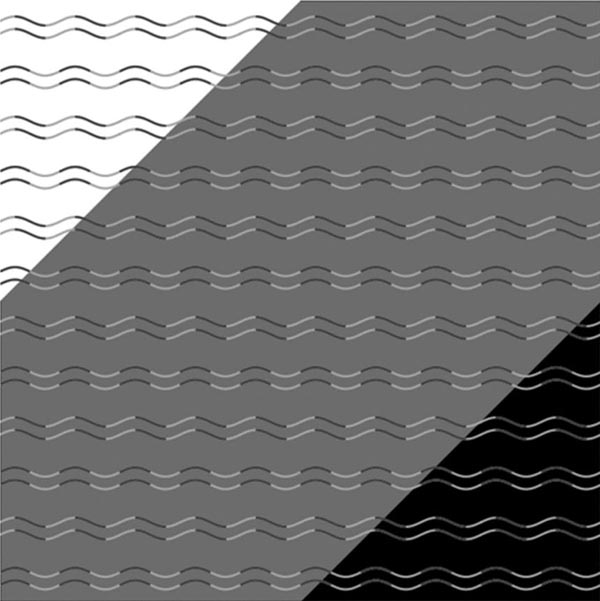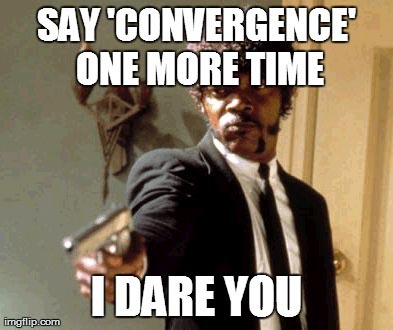Wrapped Up In Books
Over the past 10 years or more, regular studies from Library Journal have tracked the growth of electronic materials and resources in academic and research libraries (as well as public libraries), often at the expense of print collections.
The Atlantichas an interesting story about academic libraries that have attempted to cut down or relocate their physical books only to have students and other purported bibliophiles complain or protest. But here’s the rub: once it was decided to keep the books, they are never used again. “There has been a 64 percent decline in the number of books checked out by undergraduates from Bass Library over the past decade,” says the article.
Book usage in academia is not as simple as e- vs. p-, as the Library Journal studies have repeatedly shown. Students—and even faculty and other library users—have mixed preferences for print and electronic materials. When it comes to accessing research materials for papers and projects, the preference is overwhelmingly for electronic materials. But when it comes to pleasure reading or reading full-length books for English assignments and the like, the preference—yes, even among college age students—is for print. (Disclosure: one of our WhatTheyThink contributors has long written these studies for Library Journal.)
Indeed, one of the prevailing trends over the past decade has been the rise and fall of ebook usage in academic and public libraries—an increasingly frequent response from librarians to questions about barriers to ebook usage in libraries is that “users prefer print.”
Still, when it comes to doing research, nothing can beat a good searchable database.
Bookmobile
Retired teacher Antonio La Cava travels to the villages of Basilicata in his lovely little bookmobile to promote reading. Truly Amazing. pic.twitter.com/SSe5eLgE9o
— #BookLovers ?? (@BookChat_) May 21, 2019
The Lions Aren’t Sleeping Tonight
Speaking of libraries, when is the last time you set foot in a public library? Even if you don’t visit libraries in person, there is still a good reason to get a library card, and not only because the app Kanopy lets you stream classic, foreign, and art films online for free with your library card (if your local library supports it). It might also be worth getting a New York Public Library card even if you never plan to visit Patience and Fortitude in the flesh (or marble) if only to access some of the NYPL’s ~500 venerable online collections and resources. Some examples:
- TheS. Declassified Documents Online—access various FBI files and find out what really happened at Roswell.
- American Film Scripts Online—more than 800 screenplays as well as “a bibliographic and biographical database of directors and writers, as well as special features, such as the ability to search by character, scene, race, and year of writing.”
- AP Images—a database of seven million primary-source Associated Press photographs from the 1820s to today.
- Early English Books Online—every printed book in the English language from 1475 to 1700, such as Queen Elizabeth I’s 1601 work succinctly titled, Her Maiesties most princelie answere, deliuered by her selfe at the court at VVhite-hall, on the last day of Nouember 1601 When the speaker of the lower house of parliament (assisted with the greatest part of the knights, and burgesses) had presented their humble thanks for her free and gracious sauour, in preuenting and reforming of sundry grieuances, by abuse of many grants, commonly called monopolies. The same being taken verbatim in writing by A.B. as neere as he could possibly set it downe—they don’t write ’em like that anymore.
There are a ton of other resources online, all to be had with just a library card.
Cross Words
We always knew there was something suspicious about him.
Will Shortz Frustrated That Police Yet To Crack Taunting Puzzles Revealing Locations Of 40 Years Of Murder Victims https://t.co/Pu0J0JA2Vg pic.twitter.com/Ru1qaYyn7s
— The Onion (@TheOnion) May 28, 2019
Poster Children
If you’re in New York City this summer, be sure to visit was is the world’s first “poster museum”: the Poster House.
A collection of 7,000 posters from across the globe will be going into the Poster House, the country’s first graphic design museum devoted entirely to the art of the paste-up, opening on 20 June.
“There isn’t a poster museum in New York City or anywhere in the US,” said Julia Knight, the museum’s director. “Posters are for everybody, they’re on the street, that seemed to be missing from New York.
A poster museum is not unlike a graffiti museum – why pay the entrance fee when some of the best posters are out on the streets? Especially since we live in an era with a nationwide resistance billboard project, what’s the point of a poster museum?
“We wanted to cover posters from all over the world and time periods,” said Knight. “Design museums feature posters, but they’re used as supplemental materials. Here, posters are a focal point and not an accessory.”
Gee! (No, 5G)
5G has arrived in the UK, and it’s fast https://t.co/XF9sHsC7on pic.twitter.com/OLHmCqgNTE
— The Verge (@verge) May 30, 2019
A Grand Illusion
Here’s a nice way to fry your brain on a Friday (well, before happy hour, anyway): an optical illusion in which curves become zigzags.

Credit: Kohske Takahashi
“Here’s the fun bit: All those lines are smooth sine waves. In fact they’re all the same curve!”
So what’s going on?
[Takahashi] set up different curves to see how well the illusion is perceived, and found that if the amplitude of the curve (the height between crest and trough) is too high or too low the illusion weakens. Where the shading changes is clearly important, as is the background, so contrast plays a role. He thinks that it may be that our brains uses one way to see curves, and another to see zigzags, and they compete with each other. Under certain circumstances they get imbalanced, and the zigzag wins even though the curvature is actually smooth.
Wooden it Be Nice?
HP now makes partially wooden laptops https://t.co/gS4IoLQcZm pic.twitter.com/961aXCzV63
— The Verge (@verge) May 28, 2019
Really Casual Friday
Now you might just get the chance to buy clothes that exist solely online. Dutch startup The Fabricant, Dapper Labs and artist Johanna Jaskowska recently sold a digital dress, Iridescence, for $9,500 on the blockchain. It's not like buying a costume in a video game -- the creators will 'tailor' it for you based on a photo, and its nature as a blockchain asset both makes it unique and gives it value like cryptocurrency.
What?
There is, however, some reasoning behind it. It's environmentally friendly, for one. Why use up fabrics on clothing you might only wear a few times? And for some people who have multiple online personas, this is a way of spicing up their image without shopping for real clothes. They're certainly not constrained by the laws of physics like they would with fabric.
But just try going out in public wearing it...
Brand on the Run
Meredith just sold Sports Illustrated to Authentic Brands, but not the magazine. What?
What Authentic Brands immediately bought was not the magazine itself but rather Sports Illustrated’s valuable intellectual property. The purchase covers the magazine’s trove of more than two million images, its swimsuit and Sportsperson of the Year brands, the instantly recognizable name itself and other assets.
$$$???
It’s something we see probably at least once a day. Some people probably see it—or many of them—in their dreams. And yet, its origins are not exactly understood. We are speaking, of course, about the dollar sign ($).
The BBC takes a look at the possible origins of this ubiquitous symbol. It seems no one ever sat down and specifically designed it; it just appeared, as if torn from the thigh of Zeus—or, indeed, the Pillars of Hercules, as one theory has it. The most popular theory suggests it was derived from the symbol for the Spanish dollar, used in the Colonial period for trade between the English Americans and Spanish Americans.
By the way, when was the dollar sign first printed?
that was made on a Philadelphia printing press in the 1790s and was the work of a staunch American patriot – or at least a vehemently anti-English Scotsman – named Archibald Binny, who’s today remembered as the creator of the Monticello typeface.
The Tale of the Tape
It’s something we use fairly often. Some people probably see it in their dreams—if they’re really weird. And yet, science isn’t entirely certain how it works. We are speaking about tape. It’s easy enough to understand why tape sticks. The sticking point, as it were, is what causes it to unstick? Says Gizmodo:
Scientists are mainly concerned with three different ways tape can unstick: It can peel, when the adhesive is attached to a flexible film and removed; it can shear, which is like peeling but parallel to the surface; or it can tack, when you press something directly down into exposed adhesive and then pull back up.
Today, scientific theory fails to fully unite shear, peel, and tack, according to ESPCI scientist Matteo Ciccotti, and tape has “defied many modeling attempts over the past 70 years,” he and his team write in one paper.
The difficulty is due to the complexities of the unsticking process. Tape first develops cavities between the adhesive and the surface to which it’s stuck. These cavities grow, and eventually, the adhesive stretches into long fibers 10 times the tape’s initial thickness before they snap. It can take a hundred to a thousand times more energy to stretch and break the fibers than it would take to simply break the individual bonds between the tape’s atoms and the atoms of the surface, said Ciccotti.
Collusion Course?
Interesting headline from The Verge: “iRobot’s new cleaning robots can team up to vacuum and mop your house.”
Or gang up on you...
The Long Arm of the Law
Not everyone is a fan of industry buzzwords.

Wouldn't It Be Ice
Out of Canada (where else?), an interesting idea to make hockey more accessible to blind players: an audible hockey puck.
Currently, blind hockey is played with a puck made of steel and filled with ball bearings so that it can be heard as it travels across the ice. The devices work, but players have trouble finding them on the ice when they stop moving and become silent. Three years ago, Gilles Ouellet, a blind hockey player and employee of L'Université du Québec à Montréal, came up with the idea for a puck that makes a continuous sound. Now researchers at the university have developed a prototype.
It’s larger than a regular puck and the noise it emits is rather like a smoke detector.
Working Up a Sweatr
New research suggests that swearing while exercising increases your physical performance.
— Quite Interesting (@qikipedia) May 30, 2019
We can vouch for this.
Hot Dog!
Sure, we’ve all had buyer’s remorse at some point, but...the Wienermobile? Well, yes, as this plaintive Craigslist post indicates: “I’ve got an Oscar Meyer Wienermobile replica for sale. Bought several years ago, had won several shows and many awards. Currently has 110,400 miles but will continue to rise as I use it daily for transportation to work. Works and runs wonderfully, just need a new car for work. The Weinermobile as a daily driver was a novelty and enjoyable for about a week. Now I suffer.”

True, we wouldn’t relish the thought of having to commute in it, and for daily transportation, it certainly wouldn’t cut the mustard. Still, if you’re up for a novel driving experience, get your buns to Bakersfield. (And at $7000, it’s cheaper than a non-existent dress.)
But then it could be worse...it could be a stair car.
Three Little Words
A New York Post tweet became something of a Mad Libs-esque meme this week: “These three little words are a big turn on.” Suggestions poured in from around Twitter.
Wisconsin fish boil https://t.co/cftbZo4uDY
— Andy Richter (@AndyRichter) May 27, 2019
Our suggestion, of course, is “expanded color gamut.”
This Week in Printing, Publishing, and Media History
May 27
1911: American actor Vincent Price born.
1912: American novelist and short story writer John Cheever born.
1925: American journalist and author Tony Hillerman born.
1930: The 1,046 feet (319 m) Chrysler Building in New York City, the tallest man-made structure at the time, opens to the public.
1933: The U.S. Federal Securities Act is signed into law requiring the registration of securities with the Federal Trade Commission.
1933: The Walt Disney Company releases the cartoon Three Little Pigs, with its hit song “Who’s Afraid of the Big Bad Wolf?” We bet Edward Albee was in the audience.
1934: American author and screenwriter Harlan Ellison born. (He had a mouth and probably did scream.)
May 28
1883: English-Welsh architect and designer of the Portmeirion Village Clough Williams-Ellis born. Be seeing you.
1908: English journalist, author, and creator of James Bond Ian Fleming born.
1936: Alan Turing submits On Computable Numbers for publication.
1945: American singer-songwriter, guitarist, and producer John Fogerty born, not on the bayou.
1961: Peter Benenson’s article “The Forgotten Prisoners” is published in several internationally read newspapers. This will later be thought of as the founding of the human rights organization Amnesty International.
May 29
1886: Pharmacist John Pemberton, inventor of Coca-Cola, places the first advertisement for his product in The Atlanta Journal. It would not be the last.
1913: Igor Stravinsky’s ballet score The Rite of Spring receives its premiere performance in Paris, France, provoking a riot.
May 30
1631: The first French newspaper, Gazette de France, makes its début.
May 31
1669: Samuel Pepys records the last event in his famous diary, due to failing eyesight.
1790: The United States enacts the Copyright Act of 1790, the country’s first copyright statute.
1819: American poet, essayist, and journalist Walt Whitman born.
1894: American comedian, radio host, game show panelist, and author Fred Allen (né John Florence Sullivan) born.
2005: Vanity Fair reveals that Mark Felt was “Deep Throat.”
June 1
1495: John Cor, a Scottish monk and servant at the court of James IV, records the first known batch of Scotch whisky.
1857: Charles Baudelaire’s Les Fleurs du mal is published.
1890: The United States Census Bureau begins using Herman Hollerith’s tabulating machine—the first “computer”—to count census results. They may still be using it.
1936: English illustrator and animator Gerald Scarfe born.
1980: Cable News Network (CNN) begins broadcasting. And thus begins the decline of newspaper circulation.
June 2
1840: English novelist and poet Thomas Hardy born.
1896: Guglielmo Marconi applies for a patent for his wireless telegraph.










Discussion
Join the discussion Sign In or Become a Member, doing so is simple and free